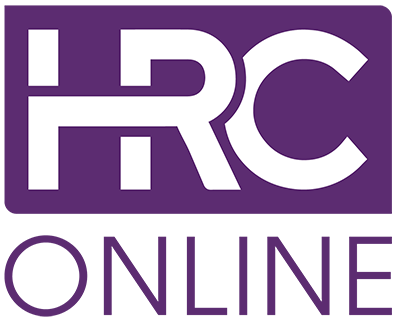
IN HR, there are certain theories and systems that are essential to doing a good job, growing your reputation, and if studying; passing assessments.
Last month we talked about Charles Handy. Today, it’s David Rock’s turn.
Like most influential thinkers on Human Resources, Rock focused on the human aspect. His method, known as SCARF, allows HR professionals to understand how to create workplaces that are great places to work.
What does a great place to work look like?
A pleasant work environment is one where people don’t feel threatened or stressed, and instead feel motivated and positive. And a friendly environment is created when these things are thought of in advance, carefully nurtured, and promoted widely. David Rock developed SCARF to help with this.
What does SCARF Stand for
Scarf stands for status, certainty, autonomy, relatedness, and fairness. Let’s break them down and what each one is, and how it’s important to create the good work environments we all want.
Status
Every employee wants to feel important and valued. Feeling respected means people feel happier and more motivated. The opposite of that is feeling looked down on or unwanted. You will notice in this explanation that we are using the word ‘feel’ a lot – well, that’s important, because if a workplace makes someone feel uncomfortable, they will be less productive.
Certainty
Certain is all about comfort. If an employee knows their job, what their goals are, and how they are expected to perform – and that is clear and doesn’t change, people will feel more comfortable and then deliver good work from a solid platform. The alternative is constantly changing expectations, workloads, and managers – and that’s stressful and uncertain.
Autonomy
Autonomy means thinking, and being allowed to think, for yourself. An example is being given a problem and being allowed to work out how to solve it, without being told. The opposite of autonomy is micromanaging, or depending on your bosses to deliver your job. This can be stressful for everyone concerned. Trusting employees to do their job, and actively working to help them become more autonomous, makes things more efficient and allows both employers and employees to feel confident in their jobs.
Relatedness
Humans like to work in teams, and if you have the three aspects of a good workplace above, where everyone feels valued, we all know what our jobs are, and all are given the space to do them, people start to not only understand the value of their own work but the value of others too. This means if you have a problem, you know where to go. Teamwork, productivity and employee retention all rise when people feel part of a team, with clearly defined roles, and a common goal.
Fairness
And if all the above happens, you have fairness. The rules are set out, everyone knows their jobs and people see the workplace as fair. Unfairness comes from treating people differently depending on their status or other factors. The key to fairness is understanding the rules and applying them equally to everyone.
VAPID is the opposite of SCARF
When trying to understand something complicated, it is useful to flip it over and see what it looks like when it all goes wrong.
It’s not part of the syllabus, but let’s take SCARF and find the opposite words. Status becomes vulnerable, certainty becomes anxiety, autonomy becomes pressure, relatedness becomes isolation, and fairness becomes discrimination.
VAPID means something that is dull, uninteresting and uninspiring. David Rock developed SCARF to make workplaces the opposite of VAPID, and the job of avoiding that issue falls to HR professionals.
Further Reading
- Markos, S., & Sridevi, M. (2010). Employee Engagement: The Key to Improving Performance. International Journal of Biometrics, 5, 89. Available at: https://doi.org/10.5539/IJBM.V5N12P89
- Liu, Y., Yin, X., Li, S., Zhou, X., Zhu, R., & Zhang, F. (2021). The Relationship Between Employee’s Status Perception and Organizational Citizenship Behaviors: A Psychological Path of Work Vitality. Psychology Research and Behavior Management, 14, 743-757. Available at: https://doi.org/10.2147/PRBM.S307664
- Bagneux, V., Bollon, T., & Dantzer, C. (2012). Do (un)certainty appraisal tendencies reverse the influence of emotions on risk taking in sequential tasks? Cognition and Emotion, 26, 568-576. Available at: https://doi.org/10.1080/02699931.2011.602237
- Tillott, S., Walsh, K., & Moxham, L. (2013). Encouraging engagement at work to improve retention. Nursing Management, 19(10), 27-31. Available at: https://doi.org/10.7748/NM2013.03.19.10.27.E697
- Dorssen-Boog, P., Jong, J., Veld, M., & Vuuren, T. (2020). Self-Leadership Among Healthcare Workers: A Mediator for the Effects of Job Autonomy on Work Engagement and Health. Frontiers in Psychology, 11. Available at: https://doi.org/10.3389/fpsyg.2020.01420
- Tiedens, L., & Linton, S. (2001). Judgment under emotional certainty and uncertainty: the effects of specific emotions on information processing. Journal of Personality and Social Psychology, 81(6), 973-988. Available at: https://doi.org/10.1037/0022-3514.81.6.973
- Rutte, C., & Messick, D. (1995). An integrated model of perceived unfairness in organizations. Social Justice Research, 8, 239-261. Available at: https://doi.org/10.1007/BF02334810
- Behery, M., & Abdallah, S. (2019). Organizational climate best practices: Empirical evidence from the UAE. Journal of Research in Emerging Markets. Available at: https://doi.org/10.30585/jrems.v1i3.343
- Freedman, B. (2019). Risk factors and causes of interpersonal conflict in nursing workplaces: Understandings from neuroscience. Collegian. Available at: https://doi.org/10.1016/J.COLEGN.2019.02.001
- Rock, D. (2008). SCARF: A brain-based model for collaborating with and influencing others. NeuroLeadership Journal, 1(1), 44-52.





